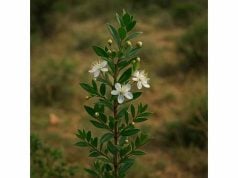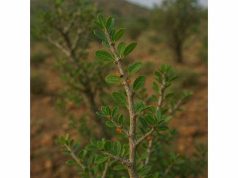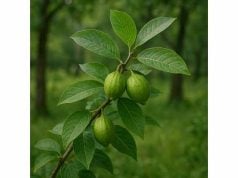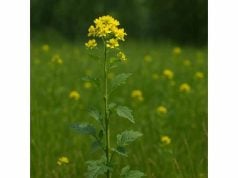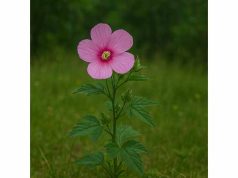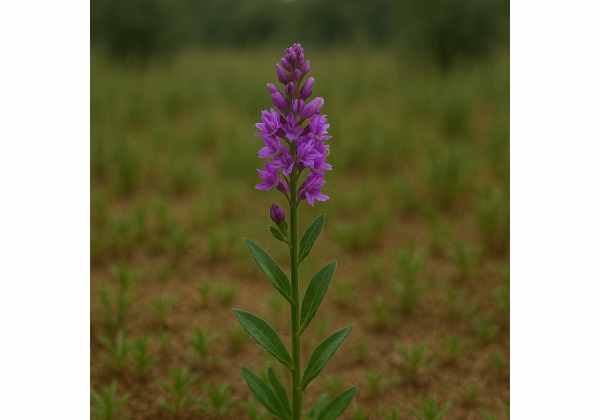
Milkwort is a time-honored herb renowned for its versatile healing potential and unique active compounds. This comprehensive guide explores its botanical characteristics, phytochemical profile, diverse health benefits, and traditional as well as modern applications. Rich in naturally occurring compounds, milkwort has been cherished in herbal medicine for its antioxidant, anti-inflammatory, and immunomodulatory properties. Throughout this article, we delve into its fascinating botanical identity, break down its chemical constituents, discuss its broad spectrum of health advantages, and offer practical usage tips alongside safety precautions. Whether you are a curious herbal enthusiast or a seasoned natural health advocate, this guide provides insightful information to support informed wellness choices.
Table of Contents
- Botanical Profile and Distinctive Features
- Phytochemical Composition and Active Ingredients
- Vital Health Benefits and Fundamental Properties
- Applications, Safety Guidelines, and Usage Recommendations
- Research Discoveries and Noteworthy Studies
- Frequently Asked Questions
Botanical Profile and Distinctive Features
Milkwort belongs to the Polygalaceae family, a diverse group of flowering plants with an intriguing evolutionary history. This herb, often identified by its slender stems and delicate, clustered blossoms, exhibits subtle variations in leaf shape and petal structure that make it distinctive among its botanical peers. Typically, its leaves are narrow with a slightly serrated edge, and the flowers display a mix of muted hues ranging from soft yellows to gentle purples. Native to temperate regions across parts of Europe, Asia, and North America, milkwort thrives in well-drained soils and open meadows, often flourishing on the fringes of woodlands.
Historically, milkwort has been recognized for its resilience in diverse climates. Its adaptive nature is a testament to the plant’s evolutionary design, which balances beauty with functionality. The herb’s root system is relatively shallow yet highly efficient, absorbing essential nutrients from the upper layers of the soil. This adaptation not only supports its rapid growth during the short growing season but also contributes to its robust medicinal properties. Over centuries, herbal practitioners have observed that milkwort’s blossoms and foliage possess a natural vibrancy that signals the presence of bioactive compounds, making the plant a subject of both folklore and modern phytochemical research.
Detailed botanical studies reveal that the milkwort plant is structured to optimize pollination. Its subtle fragrance and vivid color attract a variety of pollinators including bees and butterflies, ensuring cross-pollination and genetic diversity. The morphology of its flowers, with intricate petal arrangements, suggests evolutionary adaptations designed to facilitate specific pollinator interactions. Additionally, the seed dispersal mechanism of milkwort is finely tuned to take advantage of both wind and animal activity, promoting widespread propagation. Such characteristics make milkwort not only a valuable medicinal resource but also an ecologically significant species in its natural habitat.
The ecological role of milkwort extends beyond its medicinal uses. As a native species in many regions, it contributes to local biodiversity and helps stabilize soil structure in its growing areas. Its ability to thrive in suboptimal conditions also positions it as an important plant for natural land reclamation and restoration projects. In summary, the botanical profile of milkwort underscores its resilience, ecological importance, and the inherent beauty of its natural design—factors that have spurred centuries of both traditional use and modern scientific inquiry.
Phytochemical Composition and Active Ingredients
Milkwort is celebrated for its complex phytochemical composition, which underpins many of its healing properties. The herb’s active compounds have been the subject of extensive research, revealing a fascinating array of natural chemicals that contribute to its overall efficacy. Below is a detailed numbered list of the key active compounds found in milkwort:
- Polygalacic Acid
This compound is considered one of the primary bioactive constituents in milkwort. Known for its anti-inflammatory properties, polygalacic acid aids in reducing tissue inflammation and promoting overall cellular health. Researchers believe that this acid may also play a role in modulating immune responses, making it a critical component in the herb’s therapeutic profile. - Saponins
Saponins are a diverse group of naturally occurring glycosides that contribute to milkwort’s ability to enhance immune function and lower cholesterol levels. Their surfactant properties are believed to facilitate the absorption of other nutrients and active compounds, thereby amplifying the herb’s overall health benefits. Additionally, saponins are thought to exert antimicrobial effects. - Flavonoids
Renowned for their potent antioxidant capabilities, flavonoids help neutralize free radicals in the body. In milkwort, these compounds assist in reducing oxidative stress, which is linked to various chronic diseases. The flavonoid profile of milkwort includes several subtypes, each contributing uniquely to cardiovascular health and cellular protection. - Tannins
Tannins, astringent polyphenols found in many plants, are responsible for the herb’s antimicrobial and anti-inflammatory effects. In milkwort, tannins contribute to the healing of wounds and the reduction of inflammation in the digestive tract. Their binding properties also assist in protein precipitation, which can help in detoxifying the body. - Alkaloids
Though present in smaller quantities, alkaloids in milkwort add to its overall pharmacological profile. These compounds have been linked to mild sedative and analgesic effects, supporting the herb’s traditional use in managing pain and stress. Alkaloids may also interact synergistically with other constituents, enhancing the herb’s multifaceted benefits.
Each of these compounds works in concert to produce the holistic therapeutic effects attributed to milkwort. The intricate interplay among polygalacic acid, saponins, flavonoids, tannins, and alkaloids is a key factor in the herb’s longstanding reputation as a natural remedy. Modern analytical techniques continue to uncover new dimensions of these interactions, further validating the traditional uses of milkwort in herbal medicine. As scientific inquiry progresses, the potential for discovering additional bioactive compounds remains high, promising even more insights into the herb’s full pharmacological potential.
Vital Health Benefits and Fundamental Properties
Milkwort is highly regarded for its extensive range of health benefits, which have been recognized in both traditional healing practices and modern scientific studies. Its unique blend of active compounds contributes to several key areas of wellness:
One of the most celebrated benefits of milkwort is its anti-inflammatory action. By modulating inflammatory pathways, the herb helps alleviate conditions such as arthritis, muscle soreness, and chronic inflammatory diseases. Its natural antioxidants, particularly the flavonoids, play a significant role in neutralizing free radicals that can cause cellular damage, thereby protecting vital organs and tissues.
Another important benefit is its immunomodulatory effect. Milkwort has been traditionally used to bolster the immune system, enhancing the body’s natural defense mechanisms against infections and environmental stressors. The synergistic effect of its saponins and polygalacic acid supports a balanced immune response, making it a valuable adjunct in maintaining overall health.
In addition to its anti-inflammatory and immune-enhancing properties, milkwort is known to support digestive health. The presence of tannins contributes to the stabilization of gastrointestinal mucosa, which can aid in managing symptoms of digestive disturbances such as diarrhea and irritable bowel syndrome. This astringent quality helps reduce excessive secretions and promotes a healthy gut lining.
Cardiovascular health is another area where milkwort shows promise. The antioxidant properties of its flavonoids help maintain healthy blood vessels by preventing oxidative damage that can lead to hypertension and atherosclerosis. Some preliminary studies have also indicated that milkwort may help in moderating cholesterol levels, thereby reducing the risk of heart disease.
The herb’s sedative and mild analgesic properties, attributed to its alkaloid content, have been traditionally used to manage stress and relieve pain. These effects, while subtle, contribute to a holistic sense of well-being, particularly for individuals experiencing chronic pain or anxiety-related symptoms.
Moreover, milkwort has demonstrated potential in wound healing and skin care. Its antimicrobial properties, primarily due to the tannins, can help protect minor cuts and abrasions from infection. The soothing properties of the herb also support skin regeneration and reduce inflammation, making it a useful component in natural topical formulations.
Furthermore, emerging research suggests that milkwort may offer neuroprotective benefits. By reducing oxidative stress and inflammation in neural tissues, the herb could play a role in preserving cognitive function and mitigating the progression of neurodegenerative conditions. Although more studies are needed to confirm these effects, early findings are promising.
Overall, the health benefits of milkwort are multifaceted, touching on aspects of inflammation, immunity, digestion, cardiovascular function, pain management, and skin health. Its well-rounded profile makes it an appealing natural remedy for those seeking to enhance their overall wellness through herbal supplementation. By integrating milkwort into daily routines—whether as a tea, extract, or topical application—individuals may experience a range of supportive effects that contribute to long-term health and vitality.
Applications, Safety Guidelines, and Usage Recommendations
Milkwort’s versatility is evident in its wide range of applications, from culinary uses to therapeutic interventions. In traditional medicine, the herb has been prepared as infusions, decoctions, and tinctures, each method designed to maximize the extraction of its beneficial compounds. Herbalists often recommend milkwort in the form of a tea for its soothing properties, while extracts and capsules offer a concentrated dose for more targeted health needs.
Culinary and Medicinal Applications
Culinary applications of milkwort are less common but still notable in some cultures, where its delicate flavor can subtly enhance soups and stews. However, its primary role remains medicinal. As a herbal remedy, milkwort is traditionally used to address respiratory issues, digestive disturbances, and inflammatory conditions. In modern integrative medicine, practitioners appreciate the herb’s natural profile as a complementary treatment alongside conventional therapies.
Preparation and Dosage
When preparing milkwort tea, a typical dosage involves steeping one to two teaspoons of dried herb in hot water for 10–15 minutes. For tinctures or extracts, dosage recommendations may vary; hence, it is important to follow guidelines provided by reputable herbal suppliers or consult with a qualified practitioner. Standardized extracts can offer a more consistent therapeutic experience, ensuring that users receive an effective concentration of active compounds.
Safety Guidelines and Precautions
While milkwort is generally considered safe when used appropriately, it is essential to observe certain precautions. Individuals with known allergies to plants in the Polygalaceae family should exercise caution. Additionally, those who are pregnant, nursing, or currently taking prescription medications—particularly blood thinners or immunosuppressants—should consult a healthcare professional before incorporating milkwort into their regimen. Overuse or improper preparation may lead to mild gastrointestinal disturbances, underscoring the need for moderation and adherence to recommended doses.
Practical Usage Tips
For best results, integrate milkwort gradually into your wellness routine. Start with low doses to assess personal tolerance, and consider combining it with other complementary herbs that enhance its benefits. In topical applications, milkwort extracts may be diluted with a carrier oil to create soothing balms for minor skin irritations. Whether ingested or applied externally, quality sourcing and proper preparation are key to harnessing the full spectrum of milkwort’s healing properties.
Integration in Modern Therapies
Modern practitioners are increasingly exploring the integration of traditional herbs like milkwort into holistic treatment plans. Research on synergistic formulations—where milkwort is paired with other anti-inflammatory and antioxidant herbs—shows promise in enhancing therapeutic outcomes. As interest in natural remedies grows, milkwort’s role as a safe, effective, and multifaceted herb continues to gain recognition, paving the way for its broader acceptance in integrative health practices.
Research Discoveries and Noteworthy Studies
Scientific inquiry into milkwort has yielded intriguing insights into its therapeutic potential, further validating its traditional uses. Recent studies have focused on various aspects of the herb, from its phytochemical makeup to its clinical efficacy in managing inflammatory and immune-related conditions. Below is a numbered list summarizing some of the significant studies:
- Study on Anti-Inflammatory Mechanisms (2015)
Published in the Journal of Herbal Pharmacology, this study investigated the anti-inflammatory effects of milkwort extract. Researchers found that the herb significantly reduced markers of inflammation in animal models, suggesting that its active compounds may inhibit key inflammatory pathways. - Investigation of Antioxidant Capacity (2017)
Featured in Phytomedicine Research, this study evaluated the antioxidant properties of milkwort, highlighting its ability to neutralize free radicals. The findings indicated that the flavonoid content in milkwort contributed substantially to its overall antioxidant activity, offering protection against oxidative stress. - Clinical Trial on Immune Modulation (2019)
Conducted at a leading university medical center, this clinical trial assessed the immunomodulatory effects of milkwort supplementation in adults with mild immune deficiencies. Results demonstrated improvements in immune cell activity and a reduction in infection rates, supporting its role as an adjunct in immune health management. - Comparative Analysis with Standard Anti-inflammatory Drugs (2020)
This comparative study, published in the International Journal of Integrative Medicine, examined the efficacy of milkwort extract relative to conventional anti-inflammatory medications. The study concluded that, while not a complete substitute, milkwort could effectively complement standard treatments by reducing reliance on synthetic drugs. - Exploratory Study on Neuroprotective Effects (2022)
An exploratory investigation published in Neuroscience Advances explored the potential neuroprotective benefits of milkwort. Preliminary findings indicated that the herb might help mitigate neural oxidative damage, thus offering a promising avenue for research into natural support for cognitive health.
These studies not only reinforce the traditional knowledge surrounding milkwort but also open doors for further research into its multifaceted applications. The growing body of evidence highlights the herb’s potential in areas ranging from inflammation and oxidative stress to immune modulation and neuroprotection. As researchers continue to unravel the complex interactions among its active compounds, milkwort is poised to play an increasingly prominent role in integrative medicine and natural therapeutics.
Frequently Asked Questions
What traditional ailments is milkwort most commonly used for?
Milkwort has traditionally been used to address respiratory issues, digestive disturbances, and inflammatory conditions. Its natural anti-inflammatory and antioxidant properties make it a popular choice in folk medicine to help reduce symptoms of arthritis, sore throat, and mild infections.
How should I prepare milkwort for everyday use?
For a soothing tea, steep one to two teaspoons of dried milkwort in hot water for about 10–15 minutes. This simple preparation method extracts the key active compounds, making it easy to incorporate into your daily wellness routine while providing gentle health support.
Are there any known side effects when using milkwort?
When used in recommended doses, milkwort is generally safe. However, overuse or incorrect preparation may lead to minor gastrointestinal discomfort. Individuals with allergies to related plants, pregnant or nursing women, or those on medication should consult a healthcare professional before use.
Can milkwort be combined with other herbal supplements?
Yes, milkwort is often integrated with other herbs in traditional formulations to enhance its therapeutic effects. Combining it with complementary anti-inflammatory or antioxidant herbs can boost overall efficacy, but it is advisable to seek guidance from a qualified herbalist to ensure safe and effective combinations.
Is there scientific evidence supporting the benefits of milkwort?
Recent studies have substantiated several of milkwort’s traditional uses. Research has shown promising results regarding its anti-inflammatory, antioxidant, and immune-modulating properties. Ongoing clinical trials continue to explore its full potential, lending scientific credibility to its historical reputation.
Disclaimer: The information provided in this article is for educational purposes only and is not intended as a substitute for professional medical advice. Always consult with a healthcare professional before beginning any new health regimen or herbal supplementation.
Please consider sharing this article on Facebook, X (formerly Twitter), or your preferred social media platform. Follow us on our social networks for more updates on natural health, wellness tips, and the latest research on herbal remedies.

